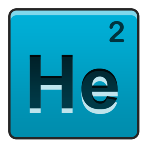In 1868

In 1868, Pierre-Jules-César Janssen noticed a yellow spectral line on the Sun that was unlike hydrogen and any other known element on Earth. The English astronomer Norman Lockyer gave the name helium to this element, which remained undiscovered for 25 years here on Earth. In 1895, William Ramsay treated gases produced by cleveite with acids and sent them to William Crookes and Lockyer, who realized that it was helium gas. In Switzerland, Per Cleve and his student Nils Abraham Langlet also discovered the same, thus being considered discoverers of helium. Helium is the second lightest and most abundant element in the Universe, after hydrogen. It is widely used mainly to inflate balloons, especially at children's parties.
Did you know??










